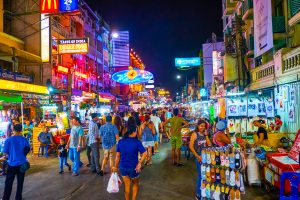Thailand welcomed 11.15 million foreign visitors in 2022, beating the government’s target for the year and suggesting that the recovery of its tourism sector is set to continue into this year, the country’s tourism ministry said yesterday.
This was still far short of the 40 million-odd international arrivals that the country registered in 2019, prior to the onset of the COVID-19 pandemic. But it marks a sharp improvement on the 428,000 visitors that the country saw in 2021, when access to the country was complicated by a host of pandemic-related travel restrictions.
Somewhat surprisingly, the country’s top three source markets in 2022 were Malaysia, India, and Singapore, according to ministry data.
This is obviously good news for Thailand, whose economy is the second largest in the Association of Southeast Asian Nations (ASEAN) but which is also unusually dependent on tourism. While the country managed to contain COVID-19 with relative success during 2020, the shutdowns and collapse in international travel brought international tourism to a virtual halt. This contributed to the country experiencing the second-worst recession of the 10 ASEAN nations that year, with the Asian Development Bank (ADB) reporting that its economy contracted by 6.1 percent.
Thai tourism authorities are now targeting 25 million international visitors in 2023, a goal that will be greatly aided by the resumption of outbound tourism from China, following Beijing’s about-face decision to abandon “zero COVID” and its associated travel restrictions earlier this month. In 2019, Thailand welcomed a record 11.5 million visitors, but China’s prolonged dalliance with its whack-a-mole “zero COVID” policy has slowed Thailand’s expected recovery.
Indeed, the resumption of Chinese outbound tourism has been heartily welcomed across the region. In the Philippine capital Manila, Reuters reported this week that Filipinos in traditional attire “played bamboo marimbas and handed out necklaces and gifts” to the first Chinese visitors to return to the country since before the pandemic. Indonesian authorities also put on a similar show at Denpasar in Bali, where the first direct flight from China in three years touched down to an honor guard of traditionally clad Balinese hostesses and lion dances to mark the Lunar New Year.
At Kuala Lumpur International Airport in Malaysia, meanwhile, Tourism, Arts, and Culture Minister Tiong King Sing this weekend personally welcomed Chinese visitors arriving from Fuzhou with Lunar New Year souvenirs.
In 2019, the Philippines and Indonesia welcomed 1.7 million and 2 million Chinese visitors, respectively. But as in Thailand, that fell sharply last year to just 39,627 travelers in the Philippines and around 100,000 in Indonesia. Malaysia saw a similar decline but has set an ambitious target of attracting 5 million Chinese tourists this year – a 60 percent increase on the 3.1 million who visited in 2019.
On a related note, Singapore’s government said this week that it is on track for a full recovery of its tourism sector by 2024. The city-state saw 6.3 million visitors last year, according to tourism authorities, down from the 19.1 million recorded in 2019 but slightly in excess of the government’s forecast of 4-6 million.
Like its neighbors, Singapore is also set to be buoyed by the return of Chinese outbound travel. The country welcomed 3.6 million visitors from China in 2019, the country’s largest single source of foreign arrivals.

































